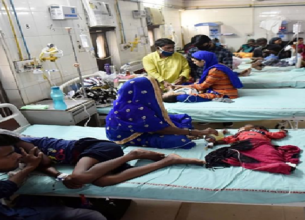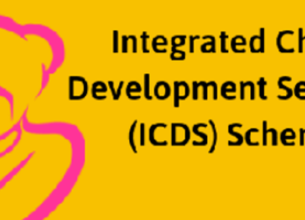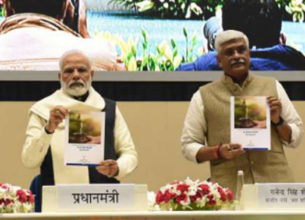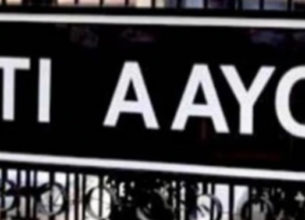NITI AAYOG RECONSTITUTED
07, Jun 2019
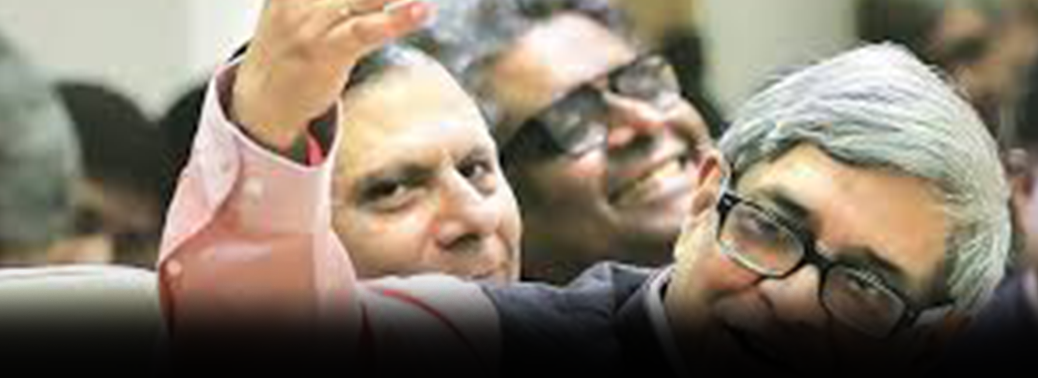
Prelims level : Governance
Mains level : GS-II Governance, Social Justice and IR
Why in News:
- Prime Minister Narendra Modi Thursday approved the reconstitution of the NITI Aayog.
Background: / NITI AAYOG:
- Planning Commission was replaced by a new institution – NITI AAYYOG on January 1,
2015 with emphasis on ‘Bottom –Up’ approach to envisage the vision - of Maximum Governance, Minimum Government, echoing the spirit of ‘Cooperative Federalism’.
Administrative Skeltal:
- Chairperson: Prime Minister
- Vice-Chairperson: To be appointed by Prime-Minister
- Governing Council: Chief Ministers of all states and Lt. Governors of Union Territories.
- Regional Council: To address specific regional issues, Comprising Chief Ministers and Lt. Governors Chaired by Prime Minister or his nominee.
- Adhoc Membership: 2 members in ex-officio capacity from leading Research institutions on rotational basis.
- Ex-Officio membership: Maximum four from Union council of ministers to be nominated by Prime minister. Chief Executive Officer: Appointed by Prime-minister for a fixed tenure, in rank of Secretary to Government of India.
- Special Invitees: Experts, Specialists with domain knowledge nominated by Prime- minister.
NITI Aayog Hubs:
- Team India Hub acts as interface between States and Centre.
- Knowledge and Innovation Hub builds the think-tank acumen of NITI Aayog.
- The Aayog planned to come out with three documents — 3-year action agenda, 7-year medium-term strategy paper and 15-year vision document.
Importance:
- The 65-year-old Planning Commission had become a redundant organization. It was relevant in a command economy structure, but not any longer.
- India is a diversified country and its states are in various phases of economic development along with their own strengths and weaknesses.
- In this context, a ‘one size fits all’ approach to economic planning is obsolete. It cannot make India competitive in today’s global economy.
Objectives:
- To foster cooperative federalism through structured support initiatives and mechanisms with the States on a continuous basis, recognizing that strong States make a strong nation. To develop mechanisms to formulate credible plans at the village level and aggregate these progressively at higher levels of government.
- To ensure, on areas that are specifically referred to it, that the interests of national security are incorporated in economic strategy and policy.
To pay special attention to the sections of our society that may be at risk of not benefitting adequately from economic progress. To provide advice and encourage partnerships between key stakeholders and national and international like-minded Think Tanks, as well as educational and policy research institutions. - To create a knowledge, innovation and entrepreneurial support system through a collaborative community of national and international experts, practitioners and other partners.
- To offer a platform for resolution of inter-sectoral and inter-departmental issues in order to accelerate the implementation of the development agenda.
- To maintain a state-of-the-art Resource Centre, be a repository of research on good governance and best practices in sustainable and equitable development as well as help their dissemination to stake-holders.
Challenges:
- To prove its mettle in policy formulation, the NITI Aayog needs to prioritize from the long list of 13 objectives with clear understanding of the difference in policy, planning and strategy.
- To build the trust, faith and confidence more than the planning commission, NITI Aayog needs freedom of various kinds with budgetary provisions not in terms of plan and non- plan expenditures but revenue and capital expenditure as the higher rate of increase in capital expenditure can remove infrastructural deficits at all levels of operation in the economy.



